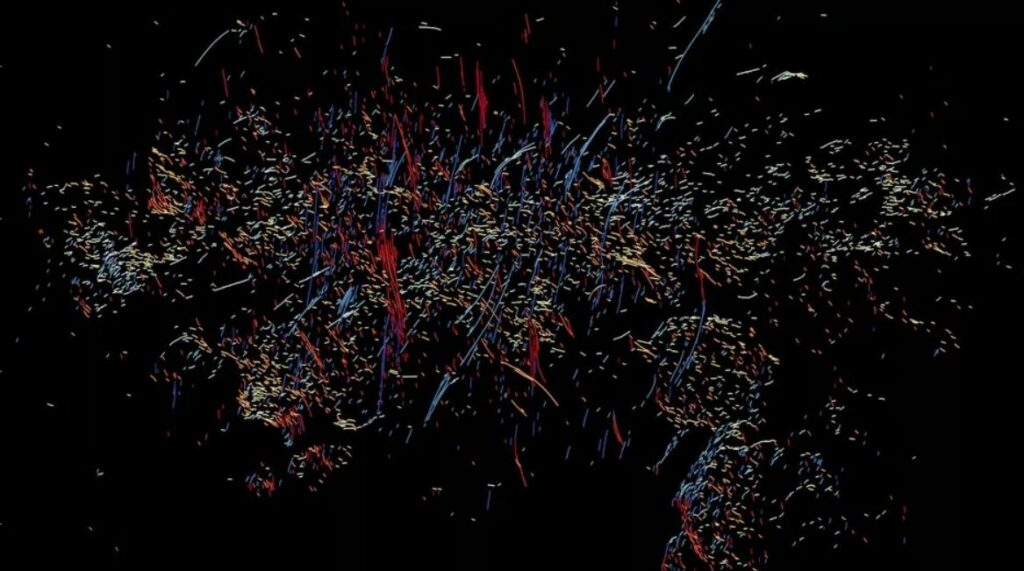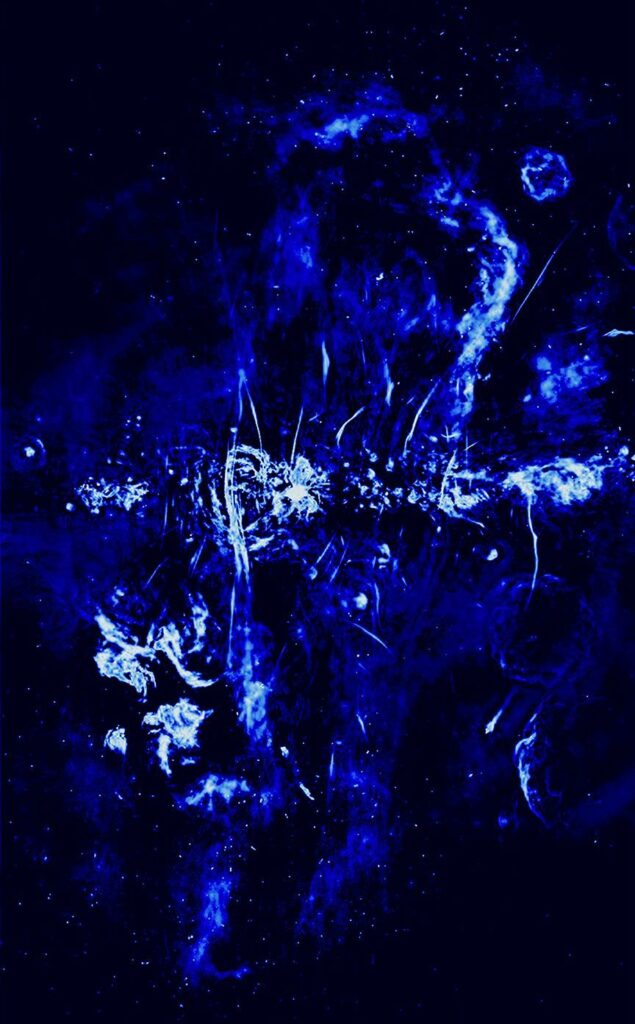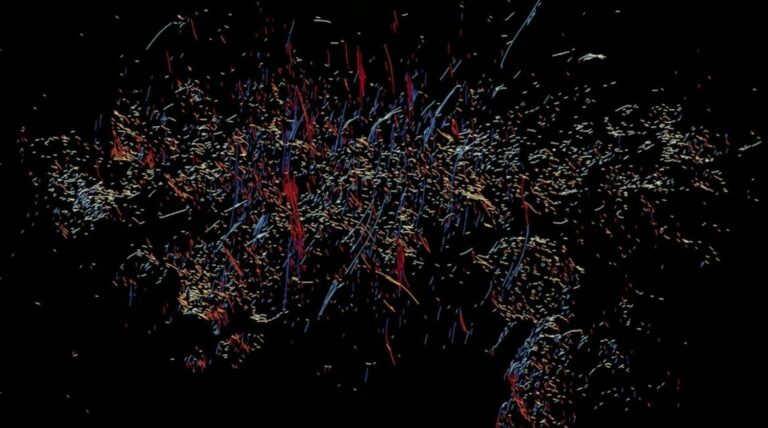Revealing the Unseen: Radio Astronomers Detect Countless Elongated Structures Emerging from the Heart of Our Galaxy
In a remarkable discovery, radio astronomers have identified a multitude of elongated structures originating from the supermassive black hole residing at the center of our galaxy.

The center of our galaxy has revealed a trove of peculiar filamentous structures, potentially tracing the tumultuous trajectory of an ancient eruption from a black hole. The findings, published on June 2 in The Astrophysical Journal Letters, unveil a collection of previously unknown “filaments” with lengths ranging between 5 and 10 light-years. Remarkably, these structures, visible only in radio wavelengths, are suspected to have been formed by bursts of high-energy particles that are imperceptible to the human eye.
When observed collectively, these crackling filaments align towards the central supermassive black hole of our galaxy, suggesting that they may represent enduring remnants of a bygone, high-energy outburst from the black hole that tore through surrounding clouds of gas.

Lead author of the study, Farhad Yusef-Zadeh, a professor of physics and astronomy at Northwestern University, expressed his astonishment at the discovery, stating, “It was a surprise to suddenly find a new population of structures that seem to be pointing in the direction of the black hole. I was actually stunned when I saw these … and we found that these filaments are not random but appear to be tied to the outflow of our black hole.”
The supermassive black hole at the center of our galaxy, known as Sagittarius A* (or Sgr A*), possesses a colossal mass exceeding that of 4 million suns. While its powerful gravitational pull maintains the cohesion of our galaxy, its insatiable appetite has resulted in profound cosmic disturbances.
Previous radio observations conducted by Yusef-Zadeh’s team revealed massive energy bubbles extending 25,000 light-years on both sides of the black hole, as well as approximately 1,000 vertical filament-like radio structures emanating from Sgr A* like the strings of an enormous harp. These enigmatic phenomena were likely generated by a historic outburst from the galactic black hole.
To detect the recent findings of horizontally elongated radio filaments, the researchers utilized enhanced observations from the MeerKAT telescope, an array of 64 interconnected radio antennas located in South Africa. By reducing background noise from nearby energy sources, the resulting images demonstrated that the newly discovered filaments possess a similar slender profile to the previously identified forest of vertical filaments. However, unlike their predecessors, these newfound energy strands predominantly radiate from one side of Sgr A*, while the previously detected filaments span the entire galactic center.
These recently unearthed structures are also considerably shorter and less abundant compared to their vertical counterparts. Despite these differences, the researchers speculate that these structures were likely created by a similar energetic eruption from the central black hole, estimated to have occurred approximately 6 million years ago.
Yusef-Zadeh concluded that the observed phenomena are the result of an interaction between the outflowing material and surrounding objects. Nonetheless, he emphasized the need for further radio observations to continually challenge existing theories and refine their analysis of the tumultuous past of the enigmatic entity residing at the core of our galaxy.
Do not forget to share your opinion with us to provide you with the best posts !




0 Comments